Especially since this drought is likely to make our California spring pass in an eye-blink.
"Six months of summer," as we nature geeks call it. While depressingly scanning the fields for a color other than brown.
Of course, there are places in CA that routinely have about 6 months of summer.
Our deserts.
And to survive there, some native plants keep it short. In both size and life.
Those miniature, ephemeral annuals that seem to pop up out of nothing, often on slopes, or in low, sandy washes, and then disappear just as quickly as they showed.
Aka, the belly flowers.
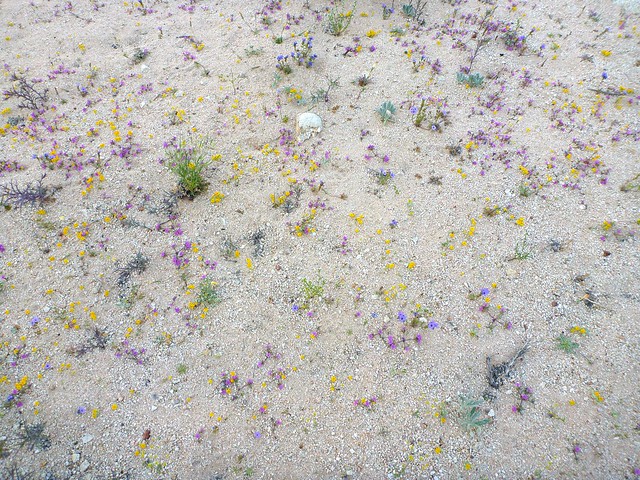
Someone splattered color on the sand!
I was lucky enough to catch some seasonal belly flora on my recent botanizing around the west Mojave. Here are a down-and-dirty dozen of the species I saw.
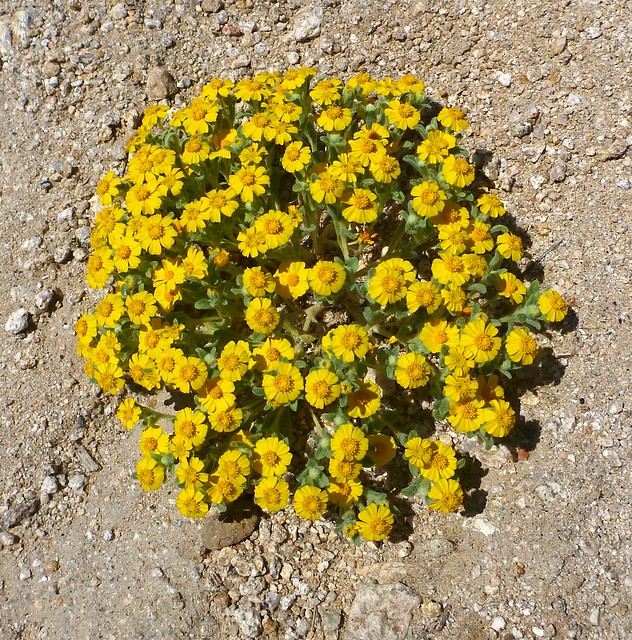
Wallace's Woolly Daisy, Eriophyllum wallacei, is a common Mojave belly flower

The rayless and less showy Pringle's Woolly Sunflower, Eriophyllum pringlei, is also common in the Mojave
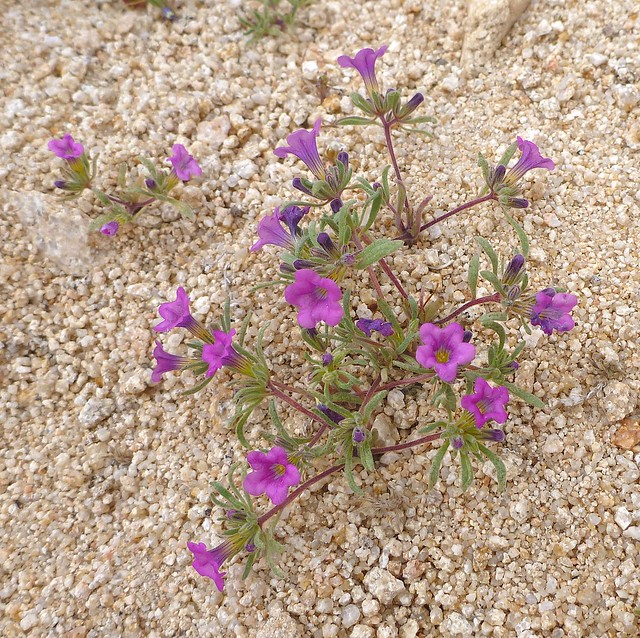
Purplemat, Nama demissum, can be common too, and can form large mats on rainy years
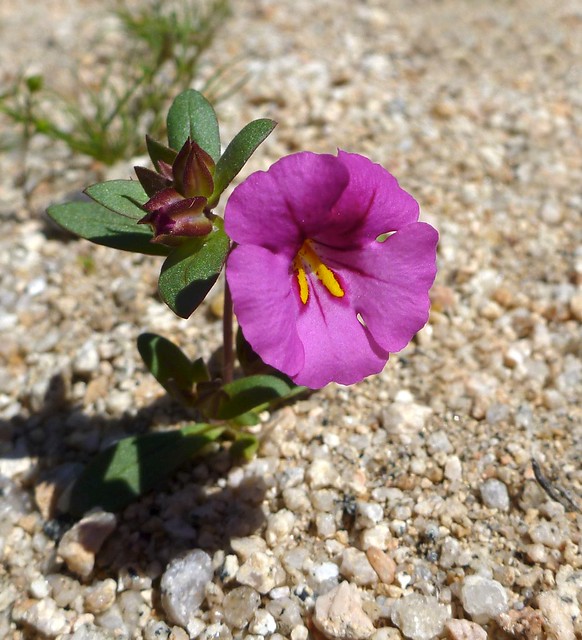
Monkeyflowers, such as Fremont's Monkeyflower, Mimulus fremontii, are also standard members of the arid mini-flora, with many highly localized species in California
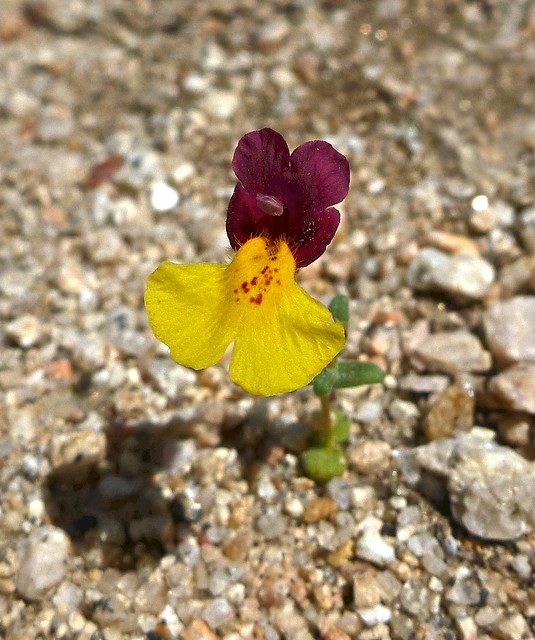
Such as the Kelso Creek Monkeyflower, Mimulus shevockii, a rare endemic to the Kelso Valley area that I've been wanting to see for years

Another plant I've been hoping to see is White Pygmy Poppy, Canbya candida, a micro member of the Poppy Family, Papaveraceae
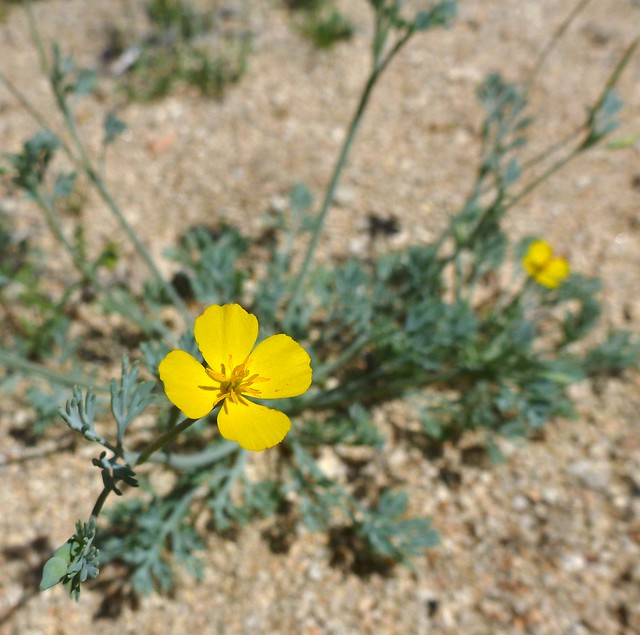
Which shouldn't be confused with the true Pygmy Poppy, Eschscholzia minutiflora, that's closely related to our State flower, but is a desert-adapted annual with dime-sized flowers
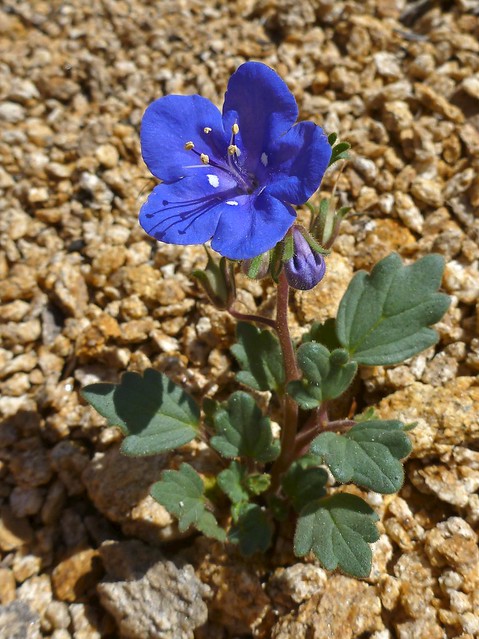
The electric blue Charlotte's Phacelia, Phacelia nashiana, is a bold beauty I've seen before, but am always, always happy to find
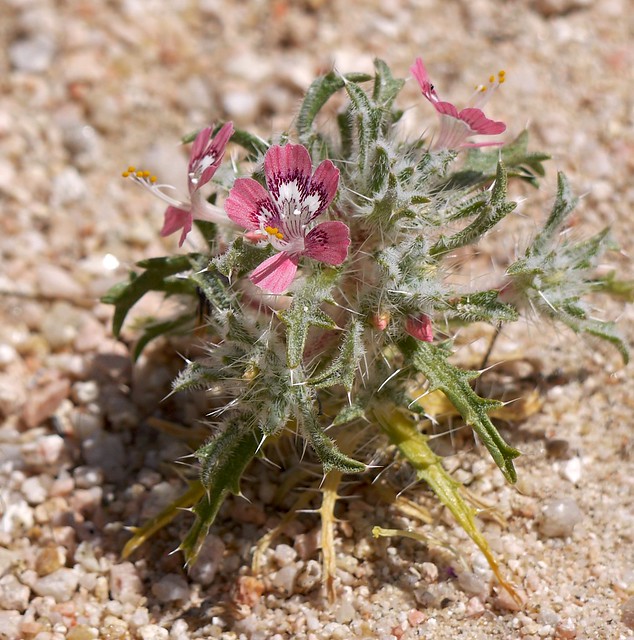
Desert Calico, Loeseliastrum matthewsii, that I saw in the Panamints, is also in the west Mojave, and most of the SoCal deserts
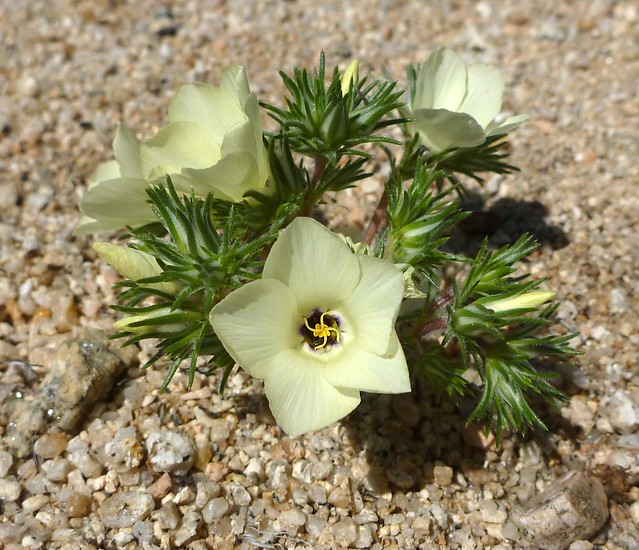
Sandblossoms, Linanthus parryae, pop up in white, light yellow and purple

But the related Golden Desert Trumpet, or Yellow Linanthus, Leptosiphon aureus, is always sunshine yellow

And the also related Evening Snow, Linanthus dichotomus, opens in the evening and night to be pollinated by moths, such as the White-lined Sphinx Moth
As I sprawled around taking photos, I learned I wasn't the only admirer of the belly flora.
The striking Black-throated Sparrows that hopped around my camp snatching up the early season insects and seeds also seemed to be fans.

So, the next time you're out in the desert, pretend it's the beach and do some belly flops. You might just see some wonderful. But do check for rattlers and scorpions first.
====
References:
- Wikipedia - Steve Martin - Let's Get Small
- Wikipedia - Mojave Desert
- The Jepson Manual of Vascular Plants of CA, and Jepson Online Interchange
- Pam MacKay - Mojave Desert Wildflowers
- California Native Plant Society (CNPS)
- CNPS Santa Clara Valley Chapter
- CNPS - Rare Plant Program and Ranking System
- Calflora.org

Fantastic! The poppy and calico are my favorites!
ReplyDeleteIt's hilarious to think of long, tall Mr. RT belly on the ground examining flowers. Nevertheless, your fabulous photos show that beautiful flowers and their message of biological diversity are fascinating to all. Happy Mother-Flower Day.
ReplyDeletePhew--a STUNNING array. Amazing. I love tiny flowers (whether alpine or desert or wherever) and you've got to respect a plant where reproductive structures are about 70% of the above-ground biomass. =)
ReplyDeleteYears ago a botanist told me that an easy way to get your work published is to study TINY PLANTS that people literally overlook. Can't imagine overlooking that Phacelia, though--WOW.
I love the blues in the borage family -- but that blue! Fabulous!
ReplyDeleteWow, those are pretty flowers and very good photos. It's always a pleasure to see flowering plants that are native to other parts of the continent.
ReplyDeleteThat's a great collection -- and the Kelso monkey flower is a awesome.
ReplyDeletethanks once again ... for beautiful inspiring photos of the native flora!
ReplyDeleteI just want to a Big ThanK You!
ReplyDeleteI'm a Photographer and I really Appreciate Your Help in Identifying These Small Guys & Gals! :D
I LovE Your Wittiness & Writing STyLe!!! X;D*